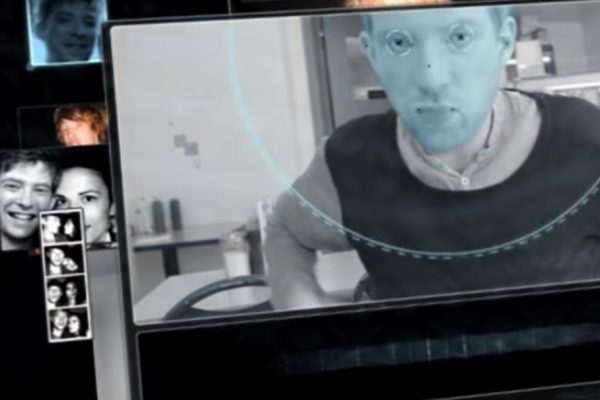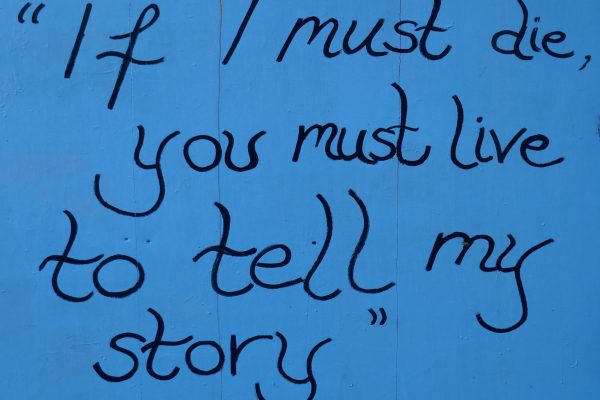We are now seeing projects directed at the general public asking people to consider how they would like to plan for their demise. Such projects can be very worthwhile, since thinking about the matter in advance could lead to better results for everyone. Of these projects, in this article I consider only a 2010 report of the Massachusetts Expert Panel on End-of-Life Care called “Patient-Centered Care and Human Morality,” the Conversation Project Guide’s Conversation Starter Kit, the Serious Illness Conversation Guide of Ariadne Labs (founded by Dr. Atul Gawande), and some related material. Gawande, a vocal advocate for revising how the medical field approaches dying, emphasizes in his Being Mortal (2014) that palliative and hospice care may be preferable at the end of life to medical treatments when these have only a small chance of success.
What constitutes a good death? While end-of-life care has come a long way, the aims of the medical industry are often in conflict with the wishes of patients.
Without denying the importance and merit of these projects, an aim of this article is to make some cautionary suggestions. Overall, I argue that while professionals involved in end-of-life care (EOLC) and the advanced care (AC) of those with chronic conditions typically begin with calls to attend to a person’s preferences and values, they seem to have other aims that can conflict with those very same preferences and values. In particular, many professionals have a particular view of what constitutes a good death and hope to promote it for the good of the person for whom they care. Moreover, the way in which some of the documents I will consider seek to ascertain a person’s preferences often involve imprecision, “nudging,” and “framing effects” that could produce skewed or biased answers. To further complicate matters, EOLC professionals hold markedly different views about whether patients should be well informed about their prognosis, which can affect how large a role is given to the professional, who might be placed in a role of making decisions on behalf of the patient from a position of superior knowledge. Finally, the choice within the EOLC community to promote increasingly robust standards for what constitutes a good end of life—and therefore potentially accepting a lower threshold for when a patient no longer sees life as worth living—may be in tension with the refusal of some EOLC professionals to support the option of assisted suicide. For this reason I conclude by considering the relation between EOLC and the movement for assisted suicide.
• • •
Prominent AC and EOLC proponents, such as those involved in Boston in the Conversation Project, Ariadne Labs, and members of the Massachusetts Expert Panel on End of Life Care, typically begin by emphasizing that the sort of care given should be driven by the preferences and values of the individual who will receive the care. One ground given for this is that there are different, presumably not unreasonable, views on what constitutes a good death. Notably, a “good death” here is defined not as a death that is in the interest of the person—this is the old notion of good death (euthanasia)—but rather a good experience of dying and a good life leading up to death. An alternative ground is that people have a right to determine how their end of life goes, based on ideals of personal sovereignty.
The initial concern of these end-of-life professionals is the frequent mismatch between how people wish to die and how they actually die. Some people receive much more aggressive medical care than they want, while others receive less aggressive treatment that they would prefer. However, other criteria sometimes get added. These include the following:
- A person’s consent should be well informed, based in detailed knowledge of their prognosis and options for care, independent of whether they would prefer to receive such information.
- Care must meet the needs of the person, even though needs often contrast with preferences by involving only objectively determined goods as the object of the need. For example, one’s preference could be to be buried next to one’s cat, which is not necessarily an objective good. Some of the objective goods suggested include no pain and suffering and the ability to continue meaningful relationships. People may or may not have these as objects of their preferences.
- Evidence-based best practices criteria should be used to determine whether some options for care, such as hospice, should be presented (though possibly the same criteria are not applied to medical treatments that probably will not successfully extend life).
- There should be concern for a positive experience for family members of the dying.
These four potential additional criteria for AC and EOLC could conflict with each other, and also with the preferences of the person receiving the care. For example, doctors usually ask family members for permission to take the organs of their deceased relative, even if the deceased already signed a donor card, and the doctors will desist if the family refuses.
A good end of life may sometimes only be achievable by actually seeking death, by way of suicide or assisted suicide, before life becomes unacceptable.
Perhaps the most controversial potential criterion is cost-effectiveness, which some AC and EOLC advocates endorse. Unlike rationing, the use of cheaper options such as palliation, which could be used throughout an illness, and hospice, used at the end of life, are said to increase rather than reduce the benefits to populations who get them, even as they cut costs. If this is true, then that would eliminate the conflict one is primed to anticipate between delivering high standards of care and cutting costs. However, we should be aware that neither greater beneficence nor distributive justice necessarily follows when more benefit is produced at less cost. This is because, in determining beneficence and justice, it is morally important to also consider who is the recipient of a benefit. For example, it may be more expensive to give smaller benefits to less well-off people, rather than larger benefits to more well-off people. Yet, beneficence and distributive justice might call for giving priority to helping the people who will be the worst off if they are not helped. Hence, we may be morally obliged to help the less well-off to whom we can only give smaller, more costly benefits.
• • •
Proponents of AC and EOLC encourage people to determine their end-of-life preferences well in advance of when it will be necessary to act on them. It is worth thinking about problems that might arise from doing this. First among these is that there could arise a conflict between respecting a person’s preferences elicited in advance and preferences expressed at the time decisions must be made. There may be a temptation to give greater weight to preferences expressed in calm reflection than to the preferences enunciated in the heat of the moment, even though the person who expresses them at that moment is mentally competent. It is worth remembering that this temptation is not legally sanctioned. For example, when Christian Scientists or Jehovah’s Witnesses consent to having blood transfusions at the moment of need, perhaps due to weakness of will, those choices are respected, despite these people’s past resolve not to have transfusions, a stance which may better reflect their deepest values.
Another issue is whether having “meaningful conversations” with family members and professionals about end-of-life care, as favored by proponents of AC and EOLC, is really necessary and preferable to private written directives that express a person’s deepest values. It is also important to consider whether questionnaires and conversation guides created to elicit preferences are good ones, or if some revision might be called for. For instance, the Ariadne Labs conversation guide gives people the option not to be well informed about their prognosis and instead asks for “their information preferences.” This conflicts with a goal of some AC and EOLC proponents who insist on people being well informed. Furthermore, the guides may not reliably elicit preferences because the questions involve a certain amount of imprecision, nudging, and framing effects. Consider the following examples.
An example of imprecision is in the Conversation Project’s guide, when people are asked to consider “what matters to me at the end of life,” explaining that this “could help communicate . . . what abilities are most important to you—what’s worth pursuing treatment for and what isn’t.” The suggestion is that the answer to what matters and is “most” important can help determine the minimum without which one would not want treatment. But not getting what matters most is not necessarily the same thing as failing to have some critical minimum need met. For example, it could matter most that one’s child is with one at the end of one’s life, but this does not commit one to declining treatment if she cannot be. Another example of imprecision is in the Ariadne Labs guide, when it asks “what abilities are so critical to you that you cannot imagine living without them,” not distinguishing between a refusal to live without some critical abilities in the long versus short term. Perhaps this distinction would come out in conversations, but can one be sure of that?
For end-of-life care and advanced care proponents, a ‘good death’ is defined not as a death that is in the interest of the person, but rather a good experience of dying.
Nudging is a concept made famous by Cass Sunstein and Richard Thaler’s 2008 book Nudge. Nudging can involve asking questions that are not neutral and, therefore, may have the tendency to favor one kind of response over another because people accept a presupposed default position even if other options are not ruled out. (Providing good reasons to favor one kind of response should not be considered nudging.) An example, from the Conversation Project questionnaire, asks, “when would it be okay to shift from a focus on curative care to focus on comfort care alone?” This phrasing presupposes that it would ever be okay to do so, rather than asking a neutral version of the question: “would it ever be okay to shift from curative care to focus on comfort care alone?” Other examples from the Ariadne Labs guide are “what kinds of medical care do you not want?” rather than “are there kinds of care you do not want?”; and “what abilities are so critical to your life that you can’t imagine living without them?” rather than “are there any abilities so critical to your life that you can’t imagine living without them?”
Another kind of bias may be introduced through framing effects, a phenomenon uncovered in the research of psychologists Daniel Kahneman and Amos Tversky. Kahneman and Tversky found that people are less willing to make an effort to gain a benefit rather than to avoid a loss, even though they would wind up in the same absolute position in the end. A question that is asked in the Ariadne Labs guide is, “how much are you willing to go through for the possibility of gaining more time?” Contrast this with a different way of asking the same question: “how much are you willing to go through for the possibility of avoiding losing more time?” One can skew answers toward going through less by framing the question in terms of gaining a benefit as opposed to avoiding a loss. In Ariadne Lab’s defense, it is difficult in this case to think of a neutral alternative question. This may therefore necessitate asking both questions at different times to see if there is a framing effect.
• • •
Though proponents of AC and EOLC typically espouse concern for a person’s unique preferences and devote considerable effort to trying to learn them, some proponents have come to give an increasing role to professional caregivers’ knowledge and even value judgements about what constitutes a good end of life. A 2016 revised Ariadne Labs guide concludes with a recommendation that caregivers determine—on the patient’s behalf—what constitutes appropriate care, given what is known of the patient’s values and goals, rather than relying on the patient’s own judgment. It is possible that this enhanced role of the professional may be due to Ariadne’s paradigm permitting patients to opt out of being fully informed about their prognosis. In such a case, the professional may indeed be the only one in the position of making a fully informed decision.
However, some AC and EOLC advocates go beyond wanting the professional to be able to act as the patient’s proxy, making decisions they believe the person would make if they could. Rather, they wish for professionals to be free to shepherd a patient toward an end-of-life peacefulness that the professional—and not necessarily the patient—values. This goal is controversial in part because, in a person’s own opinion, his past life and expected future (where belief in an afterlife is present) may not merit a peaceful passing. In such cases, aiming for a peaceful death merely because it is more pleasant may actually be inconsistent with the dignity of the dying person that professionals claim to value. If professionals give recommendations that incorporate their commitment to peacefulness, this should at least be made transparent. They could say, “given your preferences and priorities and my goal of achieving peacefulness for you, I recommend . . .”
In end-of-life literature, peacefulness is said to be associated with “acceptance” of one’s impending death. This is contrasted with “struggle,” when the dying responds to the approach of death with feelings of anger, unfairness, and fear. Acceptance is said to involve detachment from personal loss, to be caused by heightened spirituality, and is championed as the best possible outcome of end-of-life care. Not incidentally, it is also linked in the literature with reduced use of invasive medical interventions such as feeding tubes and increased home versus hospital care. Professionals who believe that death at home, free of invasive medical care, is intrinsic to a good death are likely to steer their patients in this direction. This seems to conflict with the starting assumption that a mismatch between a patient’s preferences (say, a desire for very aggressive, in-hospital care) and what they get is by definition not a good end of life. Encouraging “acceptance” over other ways of responding to one’s death may also lead to encouraging a certain spiritual world view, not shared by all and not necessarily the most reasonable, merely because it is efficacious in leading to the attitude of acceptance and the use of noninvasive care. To avoid such a result, it might be worth emphasizing to professionals that their having a particular view of a good death is not incompatible with helping others to die in a way that is grounded in a different view.
• • •
Proponents of AC and EOLC emphasize that people should be able to decide what makes life near death acceptable to them. The philosopher Bernard Williams said that there are what he called “hypothetical desires,” the objects of which one would want if one is alive and must remain so. For example, for many people, these include not being in pain and not being bored. Then there are other desires that Williams called “categorical,” the objects of which make one want to go on living in order to get them. Not being in pain or bored are not usually reasons in themselves to go on living. Often when proponents of AC and EOLC talk about providing a life that is acceptable to a person, it seems to involve more than just being free of pain and suffering; they talk about continuing to have meaningful relationships and activities. Thus it seems that they seek to satisfy not only hypothetical desires but also some categorical ones. There is an implication of this, however, that some AC and EOLC proponents are unwilling to entertain: in short, a good end of life may sometimes only be achievable by actually seeking death, by way of suicide or assisted suicide, before life becomes unacceptable because it lacks things that give one a reason to go on living and satisfy categorical desires.
It is worth emphasizing to professionals that holding a particular view of a good death is not incompatible with helping others to die in a way that is grounded in a different view.
Suicide is a form of killing. By contrast, avoiding or terminating treatment are considered forms of letting die. Suicide also involves the intention to cause one’s death, whereas it is possible to avoid or terminate treatment without intending one’s death (though one might have that intention). Physician-assisted suicide is now legally available in some locations in the United States and abroad, but is either not mentioned as an option or is actively avoided by some AC and EOLC professionals, even though they say people should be aware of all their options at the end of life.
A representative for the Coalition to Transform Advanced Care (C-TAC) once said at a conference that he did not want the program, which is focused on improving AC and EOLC, to be associated with assisted suicide because it is controversial. But this seems inadequate and inconsistent with the field’s overall position. AC and EOLC professionals favor many other active interventions to make a person’s end of life acceptable. They also do not necessarily oppose someone ending or refusing life-extending treatments for himself with the intention of stopping a life that he finds unacceptable, and some have no objection to using physician-assisted suicide to intentionally end irremediable physical suffering. Holding all these positions together makes it harder to reject the moral permissibility of sometimes using suicide or assisted suicide to end a life that is unacceptable to the person living it though it does not involve irremediable physical suffering.
I want to make this clearer by presenting an argument for assisted suicide which is an expanded version of an argument I first presented in my essay “The Right to Choose Death?” published in Boston Review in 1997. It has four steps.
First, we know that when people are in great pain, it is permissible for doctors (with the person’s consent) to use pain killers that will stop the pain though they are foreseen to also soon cause death. Some moral theorists justify this by using what is known as the Doctrine of Double Effect (DDE). They say that when death is the lesser bad by contrast to the pain (indeed the least bad option available) and is merely foreseen rather than intended, one may do what relieves the pain. (In his 2006 book on assisted suicide and euthanasia, Supreme Court Justice Neil Gorsuch places great emphasis on the DDE.)
Second, we might expand this argument to include avoiding not only great pain but life unacceptable to the person having it (because its contents do not give him reason to go on living). When people refuse easy medical treatments that would prolong life, they may refuse because imminent death is considered less of a bad (by them) than remaining alive with what to them is an unacceptable life. Their refusing treatment for this reason can be permissible despite the foreseen death that will occur. Now suppose their doctor could provide them with a drug that would allow them to engage in meaningful projects again but it puts a strain on their heart and so it is foreseen that they will shortly die. It also seems permissible for them to take this drug and thus to actively do what foreseeably causes their death. Both when they refuse easy treatment and when they take the quality of life–enhancing drug, they may be justified because they not unreasonably think death is a lesser bad than what to them is an unacceptable life, even though it has no great physical suffering in it.
Third, it is ordinarily reasonable to intend (by action or omission) a lesser bad to oneself in order to avoid a greater bad to oneself. Or to intentionally eliminate a lesser good for oneself in order to achieve a greater good for oneself. This is part of intrapersonal rationality. For example, we may permit a doctor to intentionally impose the bad of temporary pain on us if this will prevent us from falling into a permanent coma. It would also be permissible to allow a doctor to intentionally eliminate a specific capacity—one’s sight, one’s mobility—if absence of this capacity were a necessary means to save one’s life when life even without that capacity is still taken to be the greater good for oneself.
Fourth, if it has already been decided (as in the first and second points) that death is a lesser bad and continuing life a greater bad for a person in some cases, why should it not be permissible in these cases for someone to intend and actively cause his death (and seek medical assistance in bringing it about) to avoid the greater bad to himself of continuing life? This conclusion is at odds with the DDE’s view that one may foreseeably bring about one’s death when it is the lesser bad but not intentionally bring it about.
Notice that in the examples used to illustrate the third step, the lesser bads that have to be brought about in order to avoid the greater bad are not themselves related to the cause of the greater bad. For example, being sighted is not what would cause one to die even though its elimination might be a necessary means to stopping a threat to one’s life. By contrast, sometimes continuing to exist is what causes one to have an unacceptable life or a life with suffering, so continuing to exist is the very thing that presents the threat to us of greater bads. Defending oneself against a threat by intending to destroy it involves what is known as “eliminative agency.” It is contrasted with “opportunistic agency,” which can involve destroying something that is not a threat but whose destruction is useful in eliminating a threat (like destroying one’s sight if this will keep one alive). Hence, ending one’s life could sometimes be both intrapersonally rational and an instance of the type of eliminative agency involved in self-defense.
What we did in this four-step argument was to determine the relative negative value of death versus having an unacceptable life; introduce a principle of intrapersonal rationality that allows one to intend lesser bads to oneself to avoid greater bads to oneself; and then use those steps to reach the conclusion that it is sometimes permissible and an instance of eliminating a threat to intend one’s death by assisted suicide to avoid a life that is unacceptable to the person living it when death is the least bad alternative.






